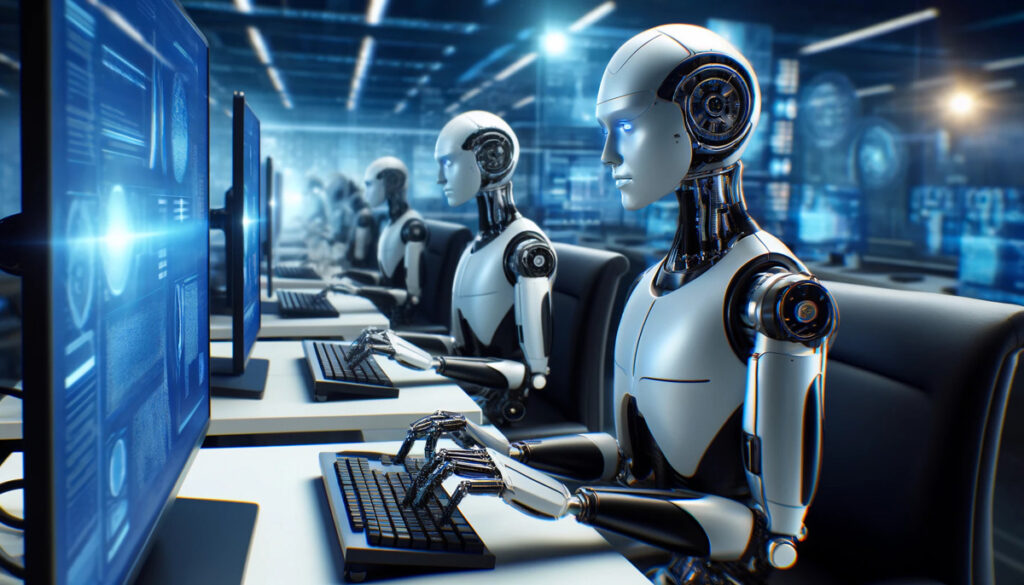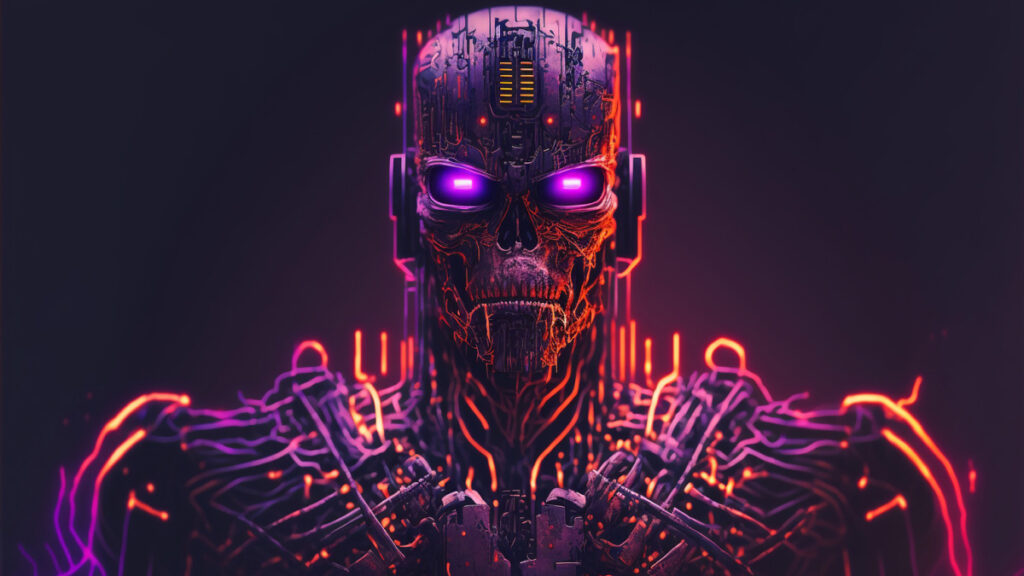AI vs. Automation: Is It Intelligent or Just Useful?
Imagine a life completely automated. Your coffee brews, pours, and mixes itself as you wake up. Your emails are sorted before you start work. And the work itself, well, it’s completed with little more than a well-crafted prompt.
Life on autopilot is closer than ever. Artificial intelligence (AI) dropped on the scene like a led zeppelin and automation is advancing daily. From the high tech tools we use at work to the everyday appliances at home.
It’s hard to keep up, don’t you think? Specifically, with AI and automation. There’s a mix of fervour and fear. Will this technology help us level up faster, launch our work to higher ground? Or will it steal our jobs?
There’s confusion, too, with some using the terms interchangeably, even though they’re two different things. So, let’s clear the air by exploring what these technologies are, their differences, and how they’re being used in the creative industry.
What is artificial intelligence, exactly?
For some of us, artificial intelligence triggers memories of John Connor, the Terminator, and Skynet. For others, it’s less science fiction and more technical—a computer analyzing complex data, recognizing patterns, and making decisions based on what it learned.
We call this machine learning, where AI improves through experience much like humans do. It’s what recommends movies to watch on Netflix and music to play on Spotify, based on past viewing and listening habits. It’s what suggests the quickest routes in Google Maps (especially useful when being hunted by a cybernetic assassin from the future).
Another example of AI is Google’s Neural Machine Translation system (GNMT). GNMT recognizes patterns in large datasets and learns to translate languages in real time.
Then there are generative tools like Midjourney and OpenAI’s ChatGPT.
Midjourney employs deep learning models to create detailed images based on text prompts. The process involves neural networks trained on a range of images and styles, allowing the AI to produce varying artworks. Users can make nearly any type of image they want, from highly realistic to abstract to graffiti-inspired illustrations.
A neural network in AI is like a web of tiny brains talking to each other, learning and getting smarter as they find patterns in pictures, sounds, and words.
ChatGPT uses a Large Language Model (LLM) to create fully written content from a short prompt. It’s been trained on massive amounts of online text to learn the patterns and relationships between words and phrases. The use cases are almost limitless, from copywriting and storytelling to summarizing research and transcripts to writing jokes (badly).
This is AI on the surface. Where and how it’s being used, along with all its varying forms, is an essay in itself. If you want to dive into the nitty gritty, prompt ChatGPT to act as a research expert and provide a complete list of AI applications. (Be sure to ask nicely—you want to be on their good side when robots rise to power.)
How is automation any different from AI?
Set it and forget it. Automation is all about efficiency, doing things faster, consistently, and with less input. Consider the thermostat in your home. Based on your presets, it automatically changes your home’s temperature without any additional work on your behalf.
You see automation a lot in manufacturing lines—the robots assembling parts without day-to-day instructions from humans. Unlike AI, these systems don’t learn or adapt. They perform the same task, under the same conditions, every time.
Then there are chatbots, and here’s where lines become blurred.
Basic bots are programmed with set actions or responses to set prompts (think of an autoresponder on a business’s social media page.) This falls under automation. But more advanced chatbots use a Natural Language Understanding engine (NLU), allowing them to interact with users. Input from you is still required, but these types of bots can ask questions, interpret responses, and execute actions. They replicate AI, but they aren’t capable of true machine learning.

Is there one big difference between AI and automation?
You probably picked up on the big difference: machine learning. AI mimics human intelligence, learning from new data and improving its responses over time. In advertising, AI can suggest highly targeted ads based on audience behaviour.
(Is your phone listening to your conversations? Maybe. Is AI learning from the sites you visit online and the content you engage with? Definitely.)
On the other hand, automation works with a fixed set of information and can’t adapt beyond its programming. As mentioned, automated chatbots in customer service are often confused as AI. They can handle basic inquiries, but they don’t understand context or grow from their interactions with users.
Remember, a robot on an assembly line isn’t sentient. No need to worry about the T-1000… Yet.
How is the creative industry using AI and automation?
The goal is to liberate human creativity and make room for innovation. To let you play and create while AI and automation tackle mundane tasks, like data processing and summarizing boring research papers.
Simply put, the technology [AI and automation tools] can be used to save you time.
But how are they being used specifically? Here are five ways marketers and advertisers are using AI and automation:
- Content creation: This includes drafting article outlines and helping with research, creating preliminary design layouts and image editing, and suggesting topics for content and editorial calendars based on your specific target audiences.
- Personalization and targeting: AI analyzes massive amounts of data to identify patterns and insights that would take humans days (or years) to process. This speeds up and refines segmentation and targeting in campaigns, leading to more personalized marketing and messaging.
- Automated workflows: Automation streamlines repetitive tasks, such as scheduling social media posts, optimizing ads, and managing email marketing campaigns. This not only saves time but also allows creative teams to focus more on strategy, design, and messaging.
- Customer insights and analytics: Since AI analyzes large datasets quickly and provides useful insights, it helps guide strategic planning. This includes forecasting consumer trends and tracking campaign performance in real-time.
- Assisting creativity: AI is becoming a creative partner. AI-driven design tools can create mockups in minutes to help sell ideas, while generative text tools can help writers brainstorm and edit content faster and more effectively.
That said, AI and automation tools are not replacements. The content created is often generic and unoriginal; it can be riddled with errors and sometimes plagiarized. Without you and your input, before and after, the result is blah at best. And let’s face it, sometimes glitches occur—a scheduled post isn’t published or the system crashes and workflows are cancelled.
Most importantly, human connection is needed now more than ever, with deep fakes and misinformation taking over the internet. Remember, machines are soulless. Trust and relationships are built by real people interacting with each other—from me to you, brand to consumer.
Was this article written by AI?
Full disclosure, AI was used to create an outline for this blog post. It also aided the research phase, helping summarize content and provide insight into the topic. But the Terminator references and the real-world examples came from the human writer, along with the style and tone. It’s an example of how the two work together.
(Oh, and automation was used to publish the social posts promoting the article on our Facebook and LinkedIn pages.)
With that out of the way, let’s wrap this up:
- AI is the brainy tech that learns and gets smarter over time. It helps you personalize ads, create content, and may even suggest your next favourite song.
- Automation is the dependable workhorse. It’s there for the repetitive stuff, like scheduling your banger tweets and speeding up the production line of your favourite car manufacturer.
These technologies aren’t going anywhere anytime soon. In fact, AI and Automation are evolving rapidly and will continue to impact the creative world. They’re more than buzzwords or the stuff of sci-fi movies—they’re real tools we’re using right now to make jobs easier and complement creativity.
These technologies are taking human talent to the next level, not replacing it. Their most effective use is doing the grunt work, giving you more time to do what you love and enjoy most—whatever that might be.
Here’s to the future of creativity. Hasta la vista, baby!
